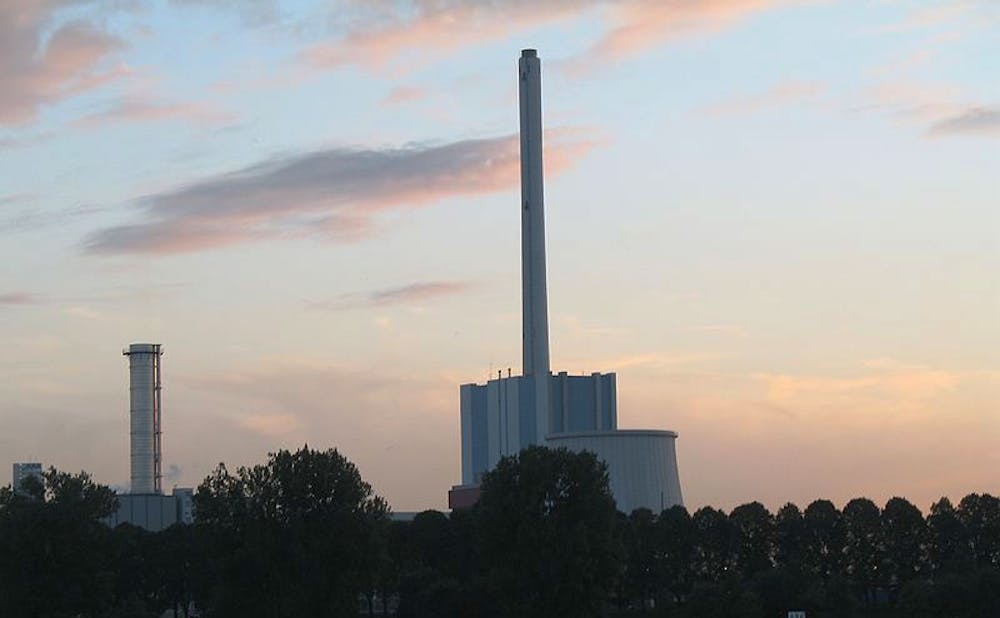Together, the 50 American plants with the highest emissions account for more than 2 percent of the world’s total carbon dioxide emissions. In North Carolina, the Marshall plant near Lake Norman, the Belews Creek plant near Winston-Salem and the Roxboro plant in Semora make the list. Each plant is a large coal-fired steam plant run by Duke Energy. While the plants are not especially inefficient, their size and fuel type causes them to be major greenhouse gas emitters. The new report does not detail a path to replacing these plants, which accommodate large portions of North Carolina’s power usage.
"The biggest point of this whole report is that power plants are a significant contribution to our global warming pollution," said Graham Givens, clean energy associate for Environment North Carolina. "It's pretty serious that we begin to cut back on our pollution.
Givens noted that 51 percent of carbon emissions in North Carolina come from power plants. Thirty-six percent comes from just the top-five plants.
There are about 6,000 power-generating facilities in the U.S., and 50 of those generate 30 percent of all power sector emissions, according to the report. Overall, 41 percent of all U.S. carbon emissions in 2011 came from power generation, with a substantial portion of those emissions being produced by coal-fired plants.
A large part of the reason why the North Carolina plants highlighted in the report emit so much is their size and operation schedule, explained Dalia Patino Echeverri, Gendell assistant professor of energy systems and public policy at the Nicholas School of the Environment. Each of the plants helps to meet base power load requirements, which means that they are producing large amounts of power and are operating near full capacity. The Marshall, Roxboro and Belews Creek plants are not particularly inefficient compared to other coal-fired plants, nor do they emit unusually high levels of greenhouse or other gasses for their size, she said.
Regardless, some experts feel that North Carolina has an exceptionally high level of emissions and should find a way to reduce that number.
Brian Magi, professor of atmospheric sciences at the University of North Carolina at Charlotte, said that carbon dioxide emissions have an especially long-term impact, so actions to reduce emissions need to be taken as soon as possible.
“Emissions from North Carolina will eventually affect the entire world, and so when we look at this problem, it’s too easy to say... that ‘we’re not emitting that much in the grand scheme of things,’” Magi said.
Replacing the coal-fired plants with ones powered by natural gas would cut emissions by power generation in half, but would also cause methane to be released into the atmosphere during natural gas extraction, Echeverri said. Methane is a highly potent greenhouse gas.
Givens argued that coal-fired plants should not be replaced with natural gas, which is also a fossil fuel and greenhouse gas source, but rather with clean and renewable energy, such as wind or solar power.
“Natural gas is not the solution in any way, shape or form,” Givens said. “From our perspective the solution is reducing our energy usage through efficiency standards and then increasing our use of clean, renewable sources.”
Givens noted that North Carolina was fifth in the nation for solar installation in 2012, and pointed to that as an example of progress in the right direction. He also expressed hope that forthcoming Environmental Protection Agency standards for power plant efficiency would help to reduce emissions.
Echeverri said, however, that if wind and solar were used to replace coal or natural gas powered plants, some fossil fuel backup capacity would still be needed as wind and solar are intermittent power sources.
Duke Energy, which runs the three high-emissions NC plants mentioned in the report, will have closed seven of its 14 coal-fired plants in North Carolina by the end of the year and has cut emissions by nearly 20 percent since 2008, wrote Catherine Butler, communication representative at Duke Energy. She added that eliminating coal as a national fuel source would increase power rates for customers.
“It’s ironic utility critics continue to protest as we carry out the very plan they worked with us to develop more than a decade ago. We are well on our way in modernizing our fleet through coal plant retirements, cleaner plants, renewables and energy efficiency,” she wrote.
Get The Chronicle straight to your inbox
Signup for our weekly newsletter. Cancel at any time.

